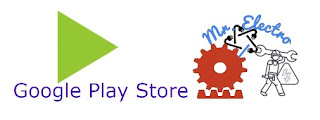Direct current (DC) is a type of electrical current that flows in one direction only. Unlike alternating current (AC), which reverses direction at regular intervals, DC current maintains a constant direction of flow. In this article, we will explore the various aspects of symbol for DC current (direct current symbol), including its properties, applications, and advantages.
Symbol for direct current ( Direct current symbol )
Properties of DC Current
Direct current is characterized by a steady flow of electric charge in a single direction. This means that the voltage of the current remains constant over time, and the current flows in a single direction from the positive to the negative terminal of a circuit. Unlike AC current, which oscillates at a specific frequency, DC current has a constant frequency of zero.
DC current is often measured in terms of its voltage, which represents the potential difference between two points in a circuit. Voltage is usually expressed in volts (V), and is measured using a voltmeter.
Applications of DC Current:
Direct current is used in a wide range of applications, from simple electronic devices to large-scale power distribution systems. Some of the most common applications of DC current include:
Electronic devices: Many small electronic devices, such as calculators, portable radios, and flashlights, are powered by DC batteries. In these devices, DC current provides a steady flow of power to the device, which is essential for reliable operation.
Electric vehicles: Many electric vehicles, such as cars, buses, and trains, use DC motors to drive the vehicle's wheels. In these systems, a battery or power supply provides a steady flow of DC current to the motor, which converts the electrical energy into mechanical energy.
Power distribution systems: DC current is used in some large-scale power distribution systems, such as those used to power data centers and telecom facilities. In these systems, DC power provides a more efficient and reliable alternative to AC power, which is subject to power loss and voltage drops over long distances.
Renewable energy systems: Many renewable energy systems, such as solar and wind power, generate DC current that must be converted to AC current for use in the power grid. In these systems, DC-to-AC converters are used to convert the DC current to AC current, which can then be distributed over long distances.
Advantages of DC Current:
Direct current offers several advantages over AC current, including:
Efficiency: DC current is more efficient than AC current, as it does not require the constant reversal of direction. This means that less energy is lost in the conversion process, making DC power more efficient for many applications.
Stability: DC current provides a more stable source of power than AC current, as it does not suffer from voltage fluctuations or surges. This makes DC power a more reliable source of energy for many applications.
Safety: DC current is generally considered safer than AC current, as it is less likely to cause electric shocks or electrocution. This is because DC current is less likely to induce muscle contractions, which can be dangerous in some situations.
Disadvantages of DC Current:
Despite its many advantages, DC current also has some disadvantages, including:
Voltage drop: DC current is subject to voltage drop over long distances, which can limit its usefulness for some applications. This means that DC power must be generated and distributed locally, rather than over long distances.
Limited applications: DC current is not suitable for all applications, as some devices and systems require AC current to operate. This means that DC power must be converted to AC power for use in many applications.
Overall, direct current is a reliable and efficient source of electrical power that is used in a wide range of applications. Direct current symbol is used in electric circuit which makes easy to understand from symbol. While it has some limitations, such as voltage drop and limited applications, DC power is a key component in many industries.







No comments:
Post a Comment
----Please share your opinion with us-----